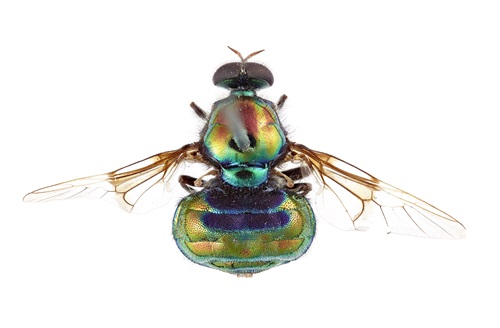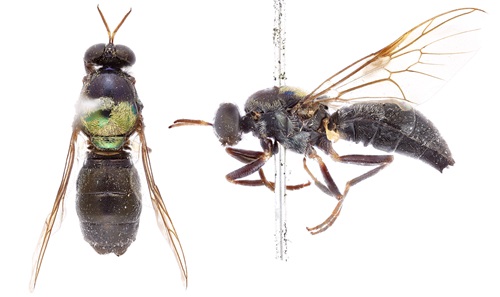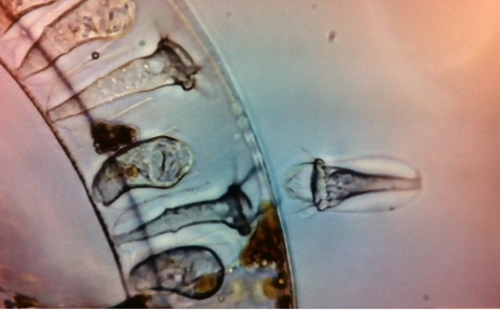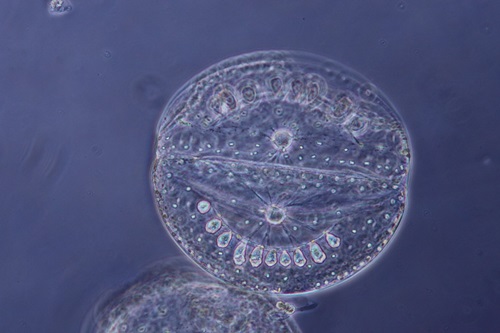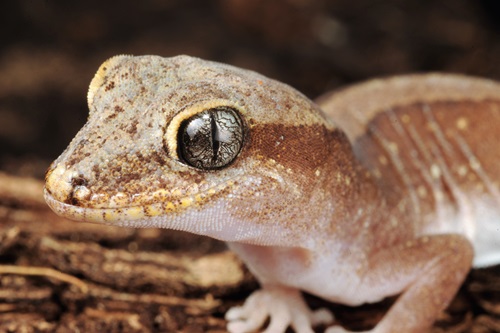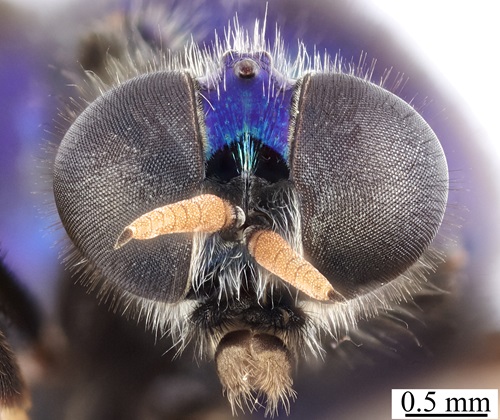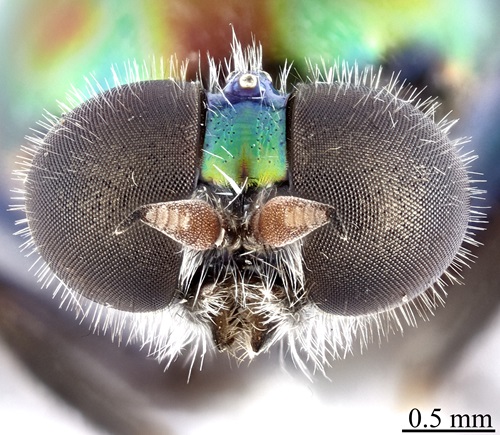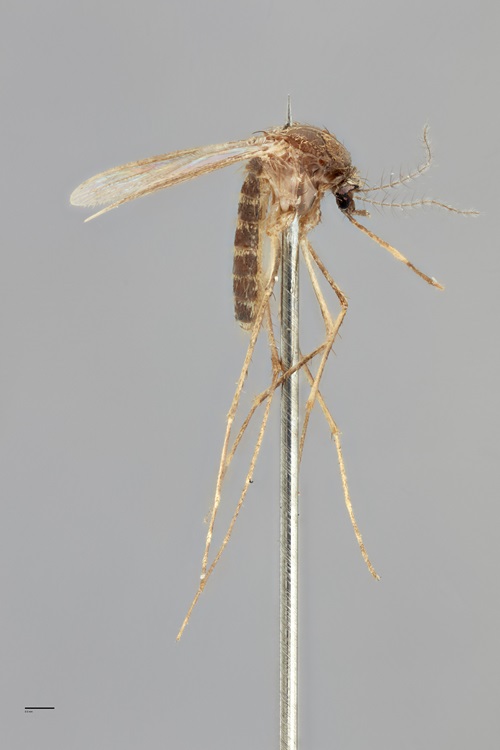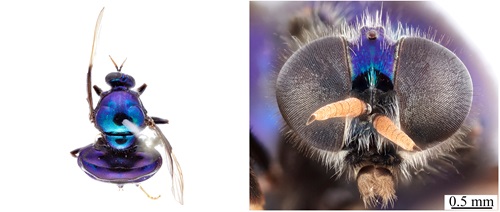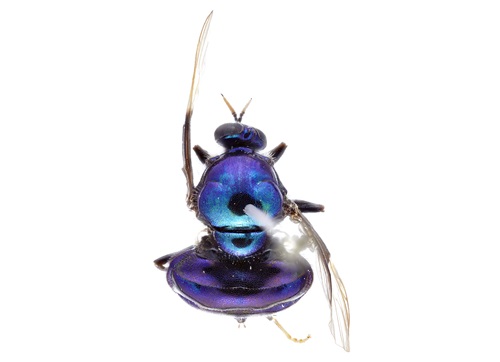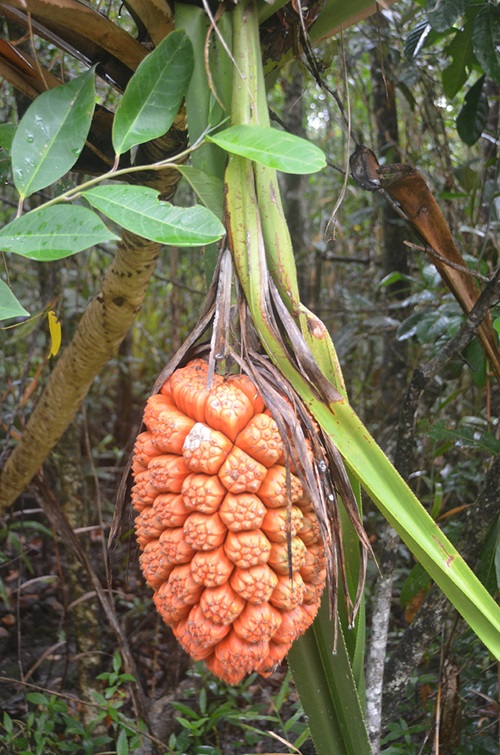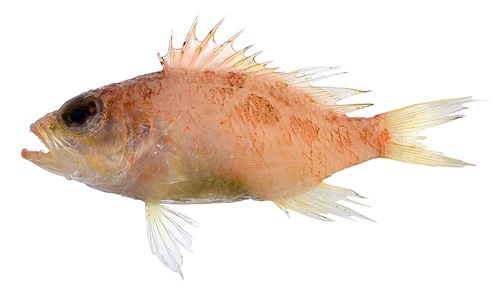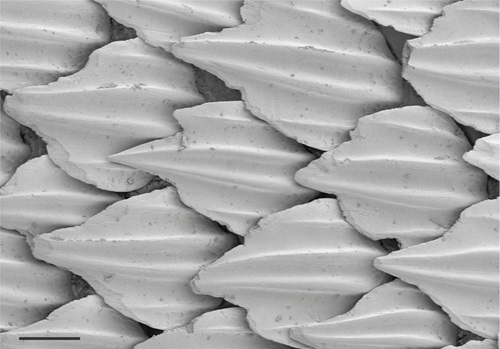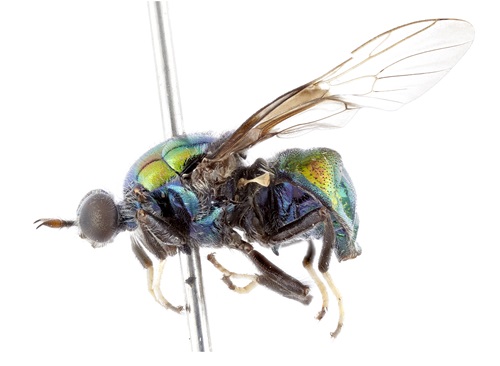A soldier fly has been named after RuPaul, Opaluma rupaul, and forms part of the new Australian genus Opaluma (from the Latin words for opal and thorn), to reflect the iridescent colours of flies in this group and the distinctive thorn on the underside of their abdomens.
Three hard-to-find beetles have been named Binburrum articuno, Binburrum zapdos and Binburrum moltres after three hard-to-find Pokémon: Articuno, Zapdos and Moltres.
Postdoctoral Research Fellow with the National Research Collections Australia, Dr Bryan Lessard, said that fabulous names can attract the attention of citizen scientists and policy makers to include these species in bushfire recovery efforts.
“Many of the thirteen new soldier flies I named are from areas impacted by the Black Summer bushfires,” Dr Lessard said.
“Two of these, Opaluma opulens and Antissella puprasina, have now been recognised as endangered species under the International Union for Conservation of Nature Red List and are known only from Lamington National Park in Queensland, an area that was significantly burned in the bushfires.
“Soldier flies are valuable in the ecosystem. The larvae recycle nutrients from dead plants and animals, while adults are pollinators of some Australian plants.”
A recent cost benefit analysis by Deloitte Access and Taxonomy Australia valued Australian biodiversity at $3 to $29 billion.
Describing and naming Australia’s biodiversity is also vital for biosecurity.
“This year we identified an exotic species of mosquito, Culex tritaeniorhynchus, that can transmit Japanese encephalitis virus and was detected in Australia for the first time. It was initially mistaken for an undescribed native species,” Dr Lessard said.
While insects dominate the list, the list also includes naming the Pandanus grayorum tree from the Wet Tropics south of Cairns that grows up to 20 metres tall and produces 40 centimetre long, orange-coloured fruit.
Frank Zich of the Australian Tropical Herbarium said the pandanus was one of a number of species on the list that had been known for a while, but did not have a scientific name.
“This species was informally known as ‘Pandanus species Russell River’, and together with Pandanus gemmifer, these are the only two Australian Pandanus species known to reproduce by growing plantlets, or pups, on their upper branches,” Mr Zich said.
Researchers at CSIRO are exploring new technologies including artificial intelligence and high throughput genomic sequencing to rapidly and cost-effectively identify new species.
CSIRO acknowledges the many research partners involved in collaborative projects to describe and name the new species featured here and the Traditional Owners of the lands on which they occur.
New names at a glance:
- Thirteen new soldier flies, including one named after RuPaul: Opaluma rupaul and two that are endangered: Opaluma opulens and Antissella puprasina
- Three beetles named after Pokémon, Articuno, Zapdos and Moltres: Binburrum articuno, Binburrum zapdos and Binburrum moltres
- A new cycad-boring weevil was named after the fictional insectoid Digmon in the Japanese anime television series Digimon Adventure, who possesses the power of drilling and manipulating the earth, like the weevil can bore into hard trunks of cycads: Demyrsus digmon
- Two orchids from South Australia and Victoria: Pterostylis jeanesii and P. peakallana
- 28 Syzygium species, which are related to lilly pillies, from New Guinea
- Four new Riccia species, which are tiny liverworts, from northern Australia
- A new pandanus from north Queensland: Pandanus grayorum
- A lizard, the Gilbert ground gecko, was described from north Queensland: Lucasium iris
- A newly recognised species of smoothhound shark that was recognised to be separate from a closely related species it had been grouped with and is known only from the Andaman Sea (near Thailand and Myanmar): Mustelus andamanensis
- Four new species of perchlets, small rocky reef fishes, were named as part of a study that reviewed all 22 species of the genus Plectranthias found in Australian waters: Plectranthias ferrugineus, P. grahami, P. mcgroutheri and P. moretonensis
- While not a new species, genomic work at the Australian National Wildlife Collection showed what were thought to be populations of the well-known Golden Whistler, Pachycephala pectoralis, in south-western Western Australia right across southern South Australia into drier parts of western Victoria, actually need to be recognized as a related species, the Western Whistler, Pachycephala fuliginosa.
- A new species of ciliate, named Vaginicola collariforma, was found living in a symbiotic relationship with the diatom, Palmerina ostenfeldii, a single celled microalgae that lives in tropical waters of Australia. The ciliates colonise slits in the diatom and wave their thread like projections, or cilia, to enable the non-motile diatom to move like a Ferris wheel. The name collariforma was chosen because the ciliates resemble a necklace. This unique duet may become a bioindicator of warming of coastal waters moving southwards.
Additional photography available here: https://www.dropbox.com/sh/h6u89f4gphlej9y/AABr4ieubASP76N-m984ROo-a?dl=0
Images
